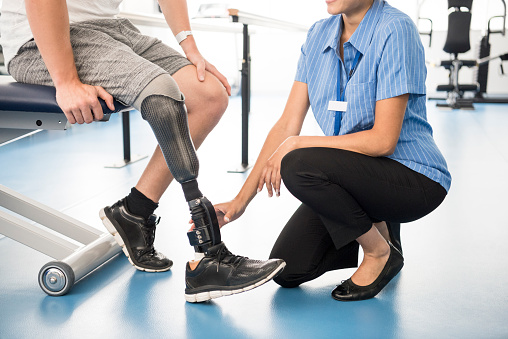Finding Parallels Between and Life
Surgical prosthetic tools is a wide classification that includes medical implants, partial hand as well as foot prostheses, and also specialized limbs made use of for specific functions such as arm or leg salvage. Implants can be irreversible or removed when no more essential, and also some types are intended to supply medication or display body functions. Medicare covers these devices when a health care company orders them and the client can demonstrate that they are needed for their recovery or to improve their feature. Prosthetic gadgets can change any type of body part, including the hands, arms, legs, feet, and eyes. They are created to be practical, secure, and comfortable for the amputee and can likewise be made visually pleasing. They are developed to be as near the all-natural anatomy of the missing out on arm or leg as feasible. One of the most important element of a prosthetic is the socket, which safeguards the recurring arm or leg while providing weight-bearing support and also load circulation. Outlets are built from plaster, normally with a plaster mold of the residual limb as a design template, or they can be made from alginate, a gelatinlike material commonly made use of for oral molds. Examination socket fitting is normally executed prior to a definitive prosthesis is fitted, and also it permits the prosthetist and also therapist to collaborate to maximize alignment as the person’s stride pattern matures. This can be made with different kinds of knee devices or other elements to figure out if a certain type or configuration boosts the patients feature. Clear-cut socket installation is the last of prosthetic analysis and needs a more thorough exam than any type of previous step in the evaluation procedure. Outlet fit is assessed in the presence of a physical therapist that is able to assess the individual’s task level and also gait pattern, the stamina of the recurring limb, the performance of suspension, as well as the family member positions of the prosthetic components in regard to the recurring limb. After a conclusive socket is in shape, a series of ten to fifteen sees is needed to examine the prosthesis, including the suspension as well as control harnesses, as well as the cords, lower arms, as well as legs. These visits are commonly executed at the very least every 4 to 6 months. During these check outs, the prosthetist and also the specialist can examine a person’s capacity to stroll on a treadmill and also in different vibrant strolling problems, consisting of backwards and forwards staircases as well as uneven surface. This can aid the clinic group make changes to the pylon, lower arms, as well as leg, as well as the suspension and cord attachments. As a result of the enhanced complexity of the parts, as well as a growing need to maximize efficiency as well as convenience, vibrant placement has actually ended up being a much more essential part of the prosthetic examination process. Dynamic positioning is a series of regulated examinations made to enhance the placement of the parts in regard to the recurring limb as well as to maximize cosmesis. Throughout the evaluation of these dynamic placements, the prosthetist can assess the performance of numerous setups making use of prehension determines as well as pressure ranges. This information is interpreted as well as the elements of the final prosthesis are adjusted to provide the best functionality with the least tension.

